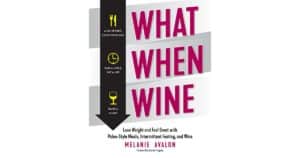 Last November, I was excited to begin my journey with IF, or Intermittent Fasting. I had read several books and articles about it and was ready to jump in. In light of this interest, it was very exciting to discover a recent study by Rafael De Cabo and Mark Mattson concerning the effects of intermittent fasting on humans, published in the December of 2019 issue of the New England Journal of Medicine. Dr. de Cabo is a senior member of staff of Gerontology at the National Institute of Aging (NIA), located in Baltimore. At this same institution, Dr. de Cabo leads the Aging, Metabolism, and Nutrition Unit. His research focuses on the use of diet to counteract the aging process. Also at the NIA, Dr. Mark Mattson is Chief of the Laboratory of Neurosciences as well as a Professor of Neuroscience at Johns Hopkins University, located in Baltimore. His work focuses on how fasting and exercise can affect as it adapts to these stressors.
Last November, I was excited to begin my journey with IF, or Intermittent Fasting. I had read several books and articles about it and was ready to jump in. In light of this interest, it was very exciting to discover a recent study by Rafael De Cabo and Mark Mattson concerning the effects of intermittent fasting on humans, published in the December of 2019 issue of the New England Journal of Medicine. Dr. de Cabo is a senior member of staff of Gerontology at the National Institute of Aging (NIA), located in Baltimore. At this same institution, Dr. de Cabo leads the Aging, Metabolism, and Nutrition Unit. His research focuses on the use of diet to counteract the aging process. Also at the NIA, Dr. Mark Mattson is Chief of the Laboratory of Neurosciences as well as a Professor of Neuroscience at Johns Hopkins University, located in Baltimore. His work focuses on how fasting and exercise can affect as it adapts to these stressors.
Their article reviews several studies that test the results of intermittent fasting on both humans and animals. The human subjects used were either healthy or considered obese, diabetic, etc. Their diets were focused on three types of intermittent fasting: alternate-day (subjects ate one day and abstained from food the next for a period of 22 days); 5:2 (subjects fasted 2 full days and ate normally the remaining 5 over a 6-month period); and daily time-restricted eating (subjects followed a daily plan in which they fasted for 16 hours and then were free to eat during the remaining 8 hours of the day, for two months. These studies were done to determine how (and if) IF “affects general health indicators and slows or reverses aging and disease processes” (2019, p.2541). I was especially interested in the idea of “intermittent fasting and metabolic switching,” as this process can and does lead to weight loss. The authors explain the cellular and metabolic responses to different types of intermittent fasting (IF), noting that each cell’s energy comes from the use of glucose and fatty acids. The body will use up the glucose first, which is produced when the pancreas releases insulin into the bloodstream to turn whatever we eat into glucose. Thus, if one keeps eating throughout the day, one will just be burning glucose. The body must come to the end of its glucose stores in order to “opt” for the fatty acids. De Cabo and Mattson found that reducing the amount of calories eaten each day will increase the ketones in the body and enable the body to metabolically “switch” from burning just glucose to burning fat. This production of ketones occurs when the body is in the fasted state, and ketones are released from the liver as a source of fuel. Together with the fatty acids, they “result in a reduced respiratory-exchange ratio… indicating the greater metabolic flexibility and efficiency of energy production.” Thus, one can burn fat more efficiently through IF.
I am now in my 7th month of Intermittent Fasting. I generally follow an 18:6 pattern, in which I fast for 18 hours and then eat within a “window” of 6 hours. When I follow the fasting protocol and eat healthy foods, I feel great and my energy level is very high. I have yet to see marked weight loss, but I feel so much better and more clear-headed. From what I have read and listened to, it can take a long time to get the body used to intermittent fasting and “training” it to burn fat. I figure that it took me 50 years to get here, so I can certainly give intermittent fasting the time it needs to repair my body. If nothing else, the energy level alone makes intermittent fasting worth it.
You can read De Cabo and Mattson’s study here: https://www.nejm.org/doi/full/10.1056/NEJMra1905136
Recommended Reading:
Delay, Don’t Deny: Living an Intermittent Fasting Life by Gin Stephens
What When Wine: Lose Weight and Feel Great with Paleo-Style Meals, Intermittent Fasting, and Wine by Melanie Avalon
Recommended Websites:
Recommended Podcasts:
intermittentfastingstories.com
Carla Howard is the Senior Circulation/Media & Marketing Assistant at the Morrill Memorial Library in Norwood, MA. L00k for her article in the June 25, 2020 issue of the Transcript and Bulletin.

